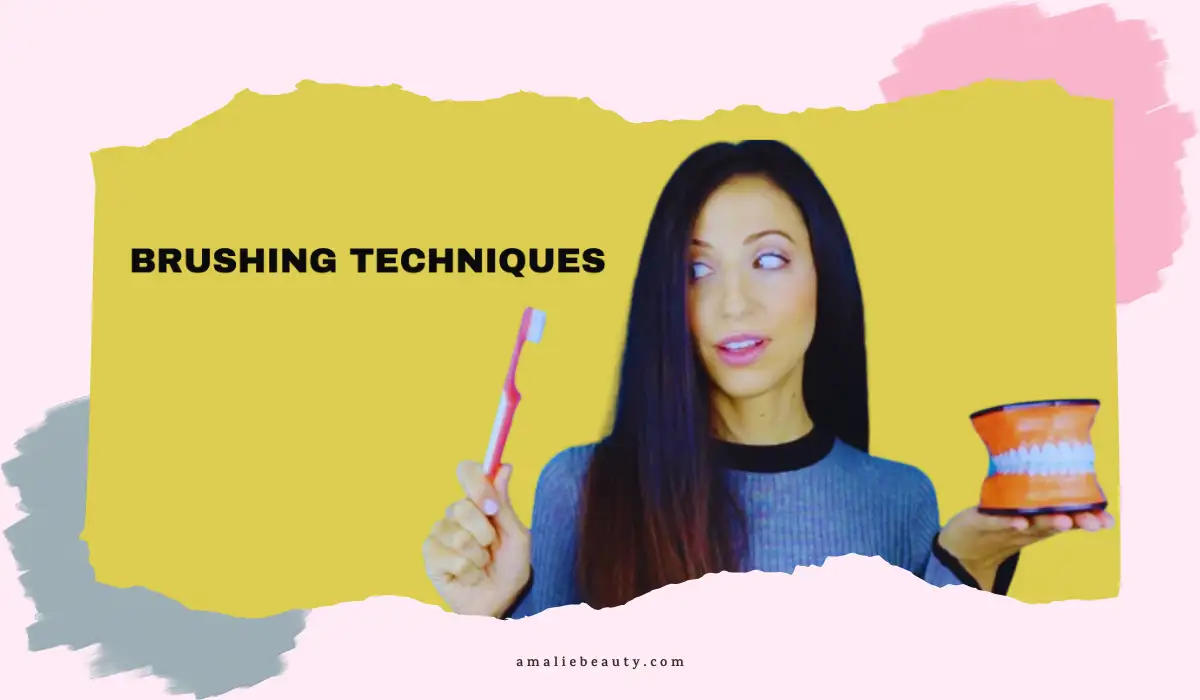Do you follow the right brushing technique? A survey conducted among 2000 people in the UK by Bupa, the British health insurer revealed that almost half of the respondents were unaware of how to brush their teeth properly.
However, you don’t have to worry any longer. In this article, we take you through the various conventional brushing techniques and the right way to brush your teeth.
Top 5 Conventional Brushing Techniques

Find the best ways to brush your teeth the conventional way for the best possible oral health. Discover the top 5 ways to improve your oral hygiene regimen and get a healthier, brighter smile.
1. Bass or Sulcular technique
A technique recommended by the American Dental Association, the Bass or Sulcular technique uses the toothbrush bristles to scrub off the plaque below your gums.
Also known as biofilm, plaque if left unattended can lead to gingivitis, a type of gum disease. The bass technique helps get rid of plaque lying adjacent to and just below the gingival cervical areas and sulcus. The other benefit is that it provides good gingival stimulation.
- The first step is to hold the toothbrush parallel to your teeth.
- It should be followed by tilting the brush to a 45° angle.
- Place the brush at such an angle that the bristles are slightly under the gumline.
- Apply pressure in a firm yet gentle manner and brush back and forth 15 to 20 times. The other alternative is to use a circular motion before proceeding to the next area.
- Brush all the teeth appearing on the external surface. Repeat the same motion and proceed to clean the backside of the teeth.
- The next step is to clean the area behind your front teeth. This can be done by holding the toothbrush in a vertical position and brushing up and down. Make sure that you do this task by using the bristles on the toe of the brush.
- The last step is to brush the chewing surface of the molars and the tongue.
2. Stillman Technique
Though the Stillman Technique and the bass technique are similar, instead of circles, here you will be using short horizontal strokes back and forth on the entire area of the teeth.
3. Charter technique
In case you have spaces between your teeth, exposed roots, gum recession, or have undergone periodontal surgery, your dentist may recommend following the charter technique to brush. This method is also effective if you have orthodontic appliances or fixed partial dentures.
- Place the bristles on the gumline at an angle of 45°. Make sure that it is pointed towards the chewing surface or crown of your teeth. When compared to the bass and Stillman technique, this position is just the opposite.
- Vibrate the brush gently for 15 to 20 counts. This can be done either using short circular strokes or small back-and-forth motions.
- Using the same pattern, brush all your teeth. Do not forget to brush all tooth surfaces and sides.
4. Modified Bass technique
The modified bass technique is the most popular brushing technique among adults. If you are a parent, make sure that you supervise your children’s brushing until they reach the age of 9 or 10.
- Place the bristles at a 45° angle to the gingivae. It should be followed by moving in a circular motion.
- Repeat the strokes around 20 times. It should be 3 teeth at a time.
- When it comes to the lingual aspect of the anterior teeth, insert the brush vertically. Press the heel of the brush into the gingival sulcus and proximal surface at an angle of 45°. It should be followed by actuating the bristles.
- The last step is to clean the occlusal surfaces. Do this by pressing the bristles firmly against the pits and fissures, followed by actuating the bristles.
The modified bass technique is quite effective for removing plaque near and just below the gingival cervical areas and sulcus. The other benefit is that it provides good gingival stimulation. This technique is easy to learn as well.
However, overzealous brushing should be avoided as it may cause injury to the gingiva. Some of the drawbacks are that it is highly time-consuming and the dexterity requirement is too high in the case of some patients.
5. Fones technique
This technique is best suited for young children and those who lack the muscle development to adopt a more complex technique.
- Ask the child to stretch his/her arm. The position should be such that the arms are parallel to the floor.
- It should be followed by the child making big circles which get reduced in diameter until very small circles are formed in front of the mouth.
- The last step is to brush in a circular motion on the teeth. While doing this, it should be ensured that the teeth and gums are covered.
When it comes to the removal of plaque, the Fones technique is as good or has better potential than the Bass technique.
The other advantages are that it is easy to learn, takes less time, and offers less gingival stimulation. Last but not least, even physically or emotionally handicapped people can also use this technique.
Some of the disadvantages of the Fones technique are that It can lead to trauma of the gingival and it lacks the movement to clean interdental areas.
Conclusion
Hope now you are knowledgeable enough about the various brushing techniques and the right way to brush your teeth. Brushing techniques assume great importance as they can otherwise lead to several dental problems.
Some of them include gums receding, tooth staining, bleeding of gums, bad breath popularly known as Halitosis, periodontal problems, teeth turning sensitive due to hot and cold sensation, and abrasion of the teeth.
The way you brush is also equally important. According to the American Dental Association, it is recommended to brush at least two minutes at a time, twice daily.
Last but not least, floss once a day as it is quite effective to remove plaque. Flossing before brushing can loosen plaque that will be brushed away later.

